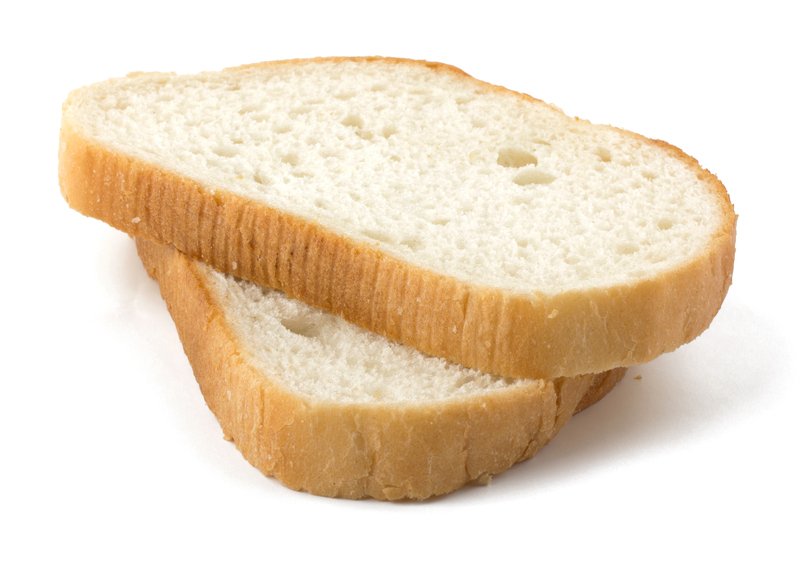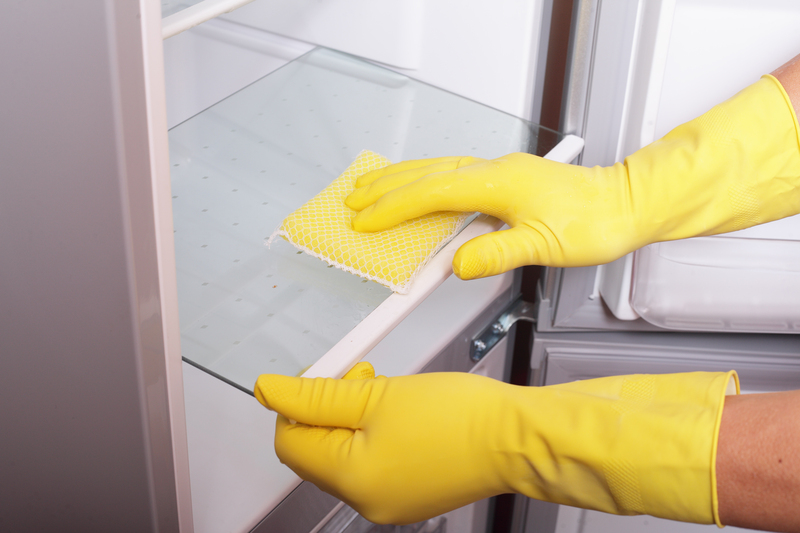Easily clean mould from window sills with our expert tips
Posted on 14/06/2025
Easily Clean Mould from Window Sills with Our Expert Tips
Mould growth on window sills is a common problem for most households. Not only does it look unattractive, but it can also cause allergies and even damage your windows over time. Is removing mould from windowsills difficult? Not if you follow the right steps! In this comprehensive guide, discover how to easily clean mould from window sills, prevent it from recurring, and keep your indoor air healthy with our expert tips and tricks.
What Causes Mould to Grow on Window Sills?
Understanding why mould forms on window sills is the key to effective and long-lasting mould removal. Mould needs three key elements to thrive:
- Moisture - Often caused by condensation on window panes
- Poor ventilation - Trapped humid air around windows encourages mould spores
- Organic matter - Dust, paint, or even wooden surfaces feed mould growth
If you suspect mould on or around your window frames, act quickly to prevent it from spreading. The following sections will detail simple, safe, and effective ways to remove black mould from window sills and prevent its return.

How to Identify Different Types of Mould on Window Sills
Not all mould looks the same. While the most common type is black mould (Stachybotrys chartarum), you might also see:
- Greenish spots (Penicillium or Aspergillus)
- White fluffy patches (Cladosporium or Powdery mildew)
- Yellow or even orange growth (various species)
Black mould on window sills is particularly concerning due to its potential health hazards and unsightly appearance. Luckily, most household moulds can be treated with the same cleaning techniques.
Essential Safety Precautions Before Cleaning Mould from Window Sills
Before tackling mould removal, always prioritise safety. Mould spores can irritate your skin, eyes, and lungs, so it's essential to:
- Wear rubber gloves to protect your hands
- Use a mask or respirator if you are sensitive to mould or cleaning chemicals
- Ventilate the room by opening windows or using an extractor fan
- Wear old clothes you can wash immediately after cleaning
Never mix cleaning products: For your safety, avoid mixing bleach with ammonia or other chemicals as this can produce toxic fumes.
Expert Step-by-Step Guide: How to Easily Clean Mould from Window Sills
1. Gather Your Cleaning Supplies
- Protective gloves and mask
- Soft brush or old toothbrush
- Clean damp cloth or sponge
- Spray bottle
- Paper towels or absorbent cloth
- Cleaning solution: You can use either a commercial mould remover, a diluted bleach solution (1 part bleach to 10 parts water), or a natural remedy.
For those seeking eco-friendly alternatives, try mixing white vinegar or baking soda with water. Vinegar kills up to 82% of mould species and is safe for regular use.
2. Remove Surface Debris
Wipe away dirt and dust with a dry cloth before applying any cleaning solution. This will make your cleaning process more effective and stop the spread of mould spores.
3. Apply Your Chosen Mould Remover
- Spray the cleaning solution generously over the affected area.
- Let it sit for 10-15 minutes to break down the mould.
- If using a commercial spray, always follow the manufacturer's instructions.
4. Scrub the Affected Area
- Use a soft brush or toothbrush to gently scrub the mouldy surface.
- Work in small sections, paying special attention to cracks and corners where mould may hide.
- Wipe up excess moisture with a damp cloth as you go.
5. Remove Residue and Dry the Surface
- After scrubbing, use a clean, damp cloth to remove any remaining cleaning solution and loosened mould.
- Finish by drying the area thoroughly with a paper towel or absorbent cloth.
Expert Tip:
For persistent or stubborn mould patches, repeat the process, or consider using a stronger, specialist mould remover for windows available at most hardware shops.
Natural Methods to Clean Mould from Window Frames and Sills
Prefer a natural approach? These methods help to clean window mould without harsh chemicals:
- White Vinegar: Pour undiluted vinegar into a spray bottle, spray onto the mould, let sit for an hour, then scrub and wipe clean.
- Baking Soda Paste: Mix baking soda with a little water to form a paste. Apply, scrub gently, and rinse off.
- Lemon Juice: Lemon's acidity helps break down mould. Apply freshly squeezed lemon juice, leave for 5-10 minutes, and wipe clean.
These remedies are gentle on most surfaces and still kill most window mould spores. However, very severe infestations may still require commercial products.
Prevent Mould from Coming Back: Expert Aftercare and Prevention Tips
Once you've easily cleaned mould from your window sills, it's important to keep it from returning. Here's how:
- Improve ventilation: Open windows frequently or use an extractor fan, especially after showers or cooking.
- Wipe away condensation: Regularly use a dry cloth to remove water droplets from window panes and sills.
- Use a dehumidifier: Lowering indoor humidity below 60% can drastically reduce mould growth.
- Insulate windows: Double-glazing or window insulation films can help prevent cold spots where condensation forms.
- Clean regularly: Dust and wipe down window sills at least once a week.
Tip: Try placing moisture absorbers or silica gel packs on window sills to help soak up excess moisture.
How to Remove Mould from Wooden Window Sills
Mould on wooden window frames or sills requires special care to avoid damaging the wood.
- Use as little water as possible--excess moisture can warp or rot wood.
- Blot instead of scrubbing to avoid removing paint or finish.
- After cleaning, fully dry the wood and consider repainting with mould-resistant paint for ongoing protection.
Frequently Asked Questions about Cleaning Window Sill Mould
Is it safe to clean mould from window sills yourself?
In most cases, yes--if the mould patch is smaller than one square metre and you follow all recommended safety practices. However, for large infestations, especially those spreading into walls or insulation, consult a professional mould removal service.
What is the best product to remove mould from window sills?
A commercial mould remover or a solution of 1 part bleach to 10 parts water usually works best. Natural options like white vinegar are suitable for regular maintenance and light mould patches.
How often should I clean my window sills to prevent mould?
Wipe down window sills at least once a week, and address any signs of moisture or discolouration immediately to stop mould from gaining a foothold.
What are the risks of leaving mould untreated on window sills?
Untreated mould can:
- Damage window sills, paint, and caulking
- Cause allergies, respiratory issues, or asthma flare-ups
- Spread to other areas of your home
When Should You Call a Professional?
While most homeowners can easily clean window mould from small patches, sometimes expert help is required:
- The mouldy area is larger than one square metre
- Mould keeps recurring quickly after cleaning
- You have serious allergies, asthma, or health concerns
- Mould has penetrated deep into wall cavities or insulation
A professional mould remediation service can assess the situation, remove all spores safely, and offer lasting prevention solutions.

Summary: Key Takeaways for Effortless Window Sill Mould Removal
- Identify the type and extent of mould on your window sills early
- Use safe, effective cleaning solutions like vinegar, bleach, or commercial sprays
- Prevent recurrence by controlling condensation and improving airflow
- Don't hesitate to call in professionals for extensive or hard-to-treat mould problems
Final Thoughts: Easily Clean Mould from Window Sills and Enjoy a Healthier Home
With our step-by-step expert tips, you can easily clean mould from window sills and stop it coming back. By keeping your windows dry, clean, and well-ventilated, you'll protect your health, your family, and your property from the persistent threat of window mould.
Ready for action? Gather your supplies, follow our guidelines, and say goodbye to unsightly and unhealthy mould on your window sills for good!
Did you find these expert techniques to remove window sill mould helpful? Share your experience or additional tips in the comments below--let's keep everyone's home fresh and mould-free together!




